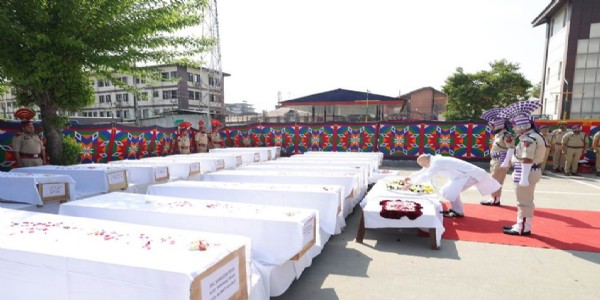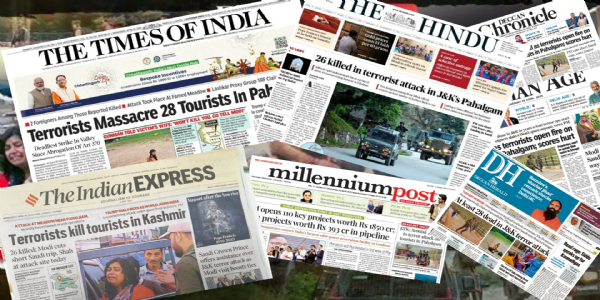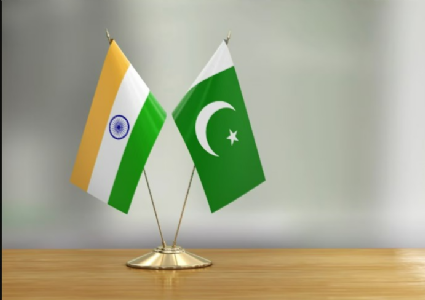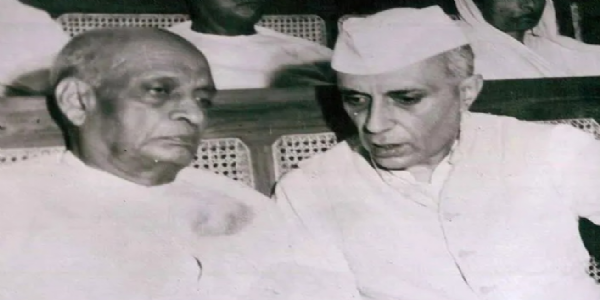Vivekananda Rock Memorial – A people’s monument
Total Views |
“No obstacle is insurmountable for a man of determination”.
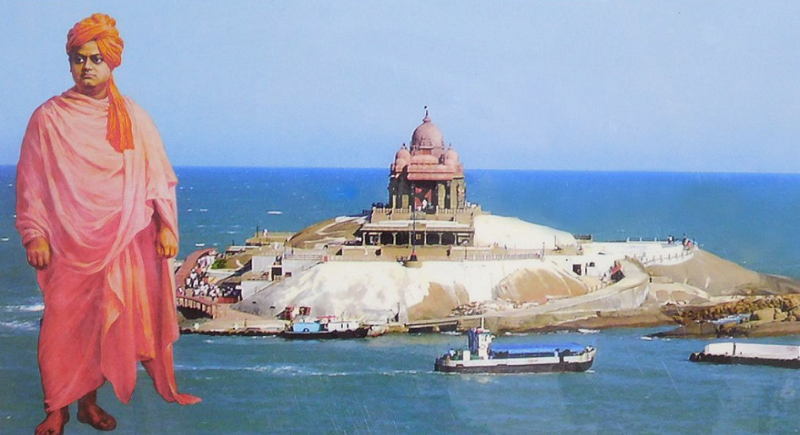
The country has recently witnessed the inauguration of the world’s tallest statue – the Statue of Unity – on the banks of Narmada overlooking the mighty Sardar Sarovar Dam at Kevadia in Gujarat. The statue of Sardar Patel, the Iron Man of modern India who accomplished the stupendous task of uniting the independent India, is a unique one in the sense that it is made out of the contribution by each and every farmer in the country. They responded to the Prime Minister Narendra Modi’s call and donated the unused iron in the form of worn out instruments, equipment etc. for making this giant statue.
The country had witnessed similar massive public participation for a memorial built in memory of the great savant Swami Vivekananda at the geographical end point of India. Yes, I am talking of the magnificent Vivekananda Rock Memorial standing erect on the massive rocks in the midst of the Indian Ocean known as ‘Sripad Sheela’ near Kanyakumari in Tamil Nadu. The Vivekananda Rock Memorial (VRM) will be entering into its Golden Jubilee year in 2019 as the country celebrates the 156th birth anniversary of this “Militant Hindu Monk” on January 12.
Perennial Source of Inspiration: Inaugurated 49 years ago in 1970, the VRM stands as a perennial source of inspiration and spiritual energy for every Indian citizen. Swami Vivekananda had said that he would continue to inspire generations to come to carry on and accomplish is unfulfilled mission after he is gone from this mortal world. The VRM is exactly proving these prophetic words of Swami Vivekananda. And the credit for this goes to the late Eknath Ranade who was the motivating spirit behind this marvellous memorial besides the people and the state governments of the country who generously contributed to its accomplishment.
Surprisingly, no such grand memorial is erected in the country of the front-runner in the freedom movement and the first Prime Minister of Independent India – Jawahar Lal Nehru – or his daughter Indira Gandhi - through such a massive public participation. There are number of statues and memorials erected in his name but maximum of them are built by the government. This is most striking difference I observe when I think of VRM and Statue of Unity. This also indicated to the influence these two great sons of Mother India had cast on the people’s psyche and continue to do so even today. For, the greatness of a leader is determined by the length of his shadow on the future.
The Sripada Sheela: Those who have studied the life of Swami Vivekananda knew that he traversed the entire country on foot to know the state of the people first hand. At the end of this journey he reached Kanyakumari the southernmost tip of our motherland where the three seas converge making it famous “Triveni Sangama”. At some distance from the sea shore, there is situated the massive rock known as “Sripada Sheela” because of the foot imprint believed to be of the Goddess Kanyakumari who did penance on this rock carved on it.
Swamiji swam to that rock and meditated there for three days. During his meditation he got the divine message to participate in the World Parliament of Religions in Chicago, USA. He followed that divine directive, reached Chicago braving all odds and participated in the Parliament of Religions and upheld the supremacy of Hindu Dharma and Sanskruti.
Idea of Memorial: It was during the birth centenary year that this idea of having a memorial of Swami Vivekananda on the rock where he meditated and got divine instructions to go to the World Parliament of Religions came up and that was quite natural. The centenary year was celebrated jointly by the Ramakrishna Mission, Government of India and many other institutions organising discourses, seminars, speeches and other programs to take the life and teachings of Swami Vivekananda to the masses.
Inspired by the nation-wide celebration of Swamiji’s birth centenary, the people of Kanyakymari also thought that it would be right to put up some memorial of the rock where he meditated and discovered the mission of his life. Organisations like Haindava Seva Sangh and its then president Velayudhan Pillai took the lead in forming a committee for the purpose of Swamiji’s memorial. Some others joined and thought of having a memorial on the rock and putting up a pedestrian bridge to go there. At the same time the RK Mission at Madras (now Chennai) thought on the similar lines as the Kanyakumari people regarding the memorial. People like Swami Chidbhavananda were associated with this task.
Opposition from Catholics: However, the way to memorial was not to be an easy cakewalk. The Christians, mostly Catholics and fishermen, who claim that St Xavier converted their ancestors to his faith, decided to put a spoke in the efforts of the committee to have Swamiji’s memorial on the rock. At the instigation of a local fanatic Catholic priest they went to the rock and put up a big Cross on it. The Cross was visible from the shore and from a greater distance. This immediately surcharged the atmosphere and the Hindus immediately sent telegrams to the collector, chief minister and President and Prime Minister saying that the rock where ‘Sripadam’ (the sacred foot of Goddess) is imprinted is a holy place of worship for the Hindus and that putting a big Cross there was a trespass by the Catholics.
Meanwhile, the Kanyakumari Temple Devaswom Board claimed the ownership of the rock because of the ‘Sripadam’ impressed on it. As the legend goes, the Goddess Kanyakumari did her ‘sadhana’ here to get Lord Shiva as her spouse. There is a grand temple of the goddess at Kanyakumari on the shore and thus their claim on the rock was most logical. The committee for memorial was formally formed under Velayudhan Pillai’s chairmanship and this committee has decided to run a ferry service to the rock so that people can visit them and see the place where Swamiji meditated. But their major problem was how to get the boatmen to run the ferry as the Catholic boatmen refused. So they imported some young men from Calicut, Kerala and after giving them clear idea about the possible dangers inherent in their duty employed their services to run the ferry. They were told in most plain words, “you will not get anything except the food. Beyond that, we do not have anything now”. But spirited as they were, those young boys accepted the challenge and ferried people to the rock daily round the year.
The fight over the Cross: When the people started visiting the rock and saw the Cross planted there, their emotions were stirred. The State Government too, had taken cognizance of the event and ordered a judicial probe declaring that it was a trespass and the Cross should be removed. It also announced that this was Vivekananda Rock and asked the revenue department to remove the Cross.
It was natural then for the Catholics to raise a hue and cry over the orders. They claimed (falsely though) that the Cross was there for 400 years and it was removed by some Hindus and the government should protect the rights of the minorities. A number of Christian newspapers in Kerala also supported them. That was a situation similar Babri Mosque-Ram Temple controversy of the present.
It so happened that one fine morning when people found that the Cross did not appear on the Rock. It was removed. By whom, nobody knows even now. But there was no Cross. There was great commotion and people from both the communities were about to clash. Timely arrival of the security men avoided the unpleasant scene. They declared the Rock as prohibited area and posted a guard there and thus the issue subsided temporarily.
The State Government’s tactics: Realising that the Rock cold be its Achilles’ heel, the state government decided that there should be no memorial on the Rock. It wanted the committee to take concurrence from the government for running the ferry service and when they approached, it refused the permission. It also said that the committee can have a memorial on the shore and not one the Rock. M. Bhaktvatsalam was the Chief Minister of Tamil Nadu then and he was also the Minister for Religious Endowments. Ruling out the memorial at the Rock he only forcefully batted for a memorial tablet to be put there to inform that Swami Vivekananda visited this rock and meditated here.
As the people associated with the Rock Memorial felt that the things were taking different turn they felt that they should have an All India Committee. With the approval of old veteran leader of Kerala Mannath Padmanabhan such a committee was formed. The Kanyakumari district committee had accepted the Chief Minister’s proposal of a memorial tablet but with a rider that it will be accepted after the approval of the All India Committee. Finally, a memorial tablet was installed on January 17, 1963 on the Rock in presence of Mannath Padmanathanan and other members of the committee and people. In February 1963 the General Body meeting of the national level committee was held at Madras which was attended by Swami Chinmayananda, Golwalkar Guruji, Mannath Padmanathan, Dr T M P Mahadevan and others.
It was in that meeting it was decided to have a full-fledged memorial of Swami Vivekananda on the Rock and not just a memorial tablet. Swamy Chinmayananda made the first donation of Rs 10,000/- for the memorial. Meanwhile to avenge the removal of Cross, some Christian fanatics on May 16m 1963 demolished the tablet and threw it into the sea. This was responded with great row and agitation, processions and protests.
Eknath Ranade comes in: When the Tamil Nadu government did not allow the Committee to have a memorial on the Rock; they approached the then RSS Sarasnghchalak M S Golwalkar alias Sri Guruji. The Committee members also realised that it was not in their capacity to build nationwide agitation to pressurise the government for the memorial. Moreover, the general atmosphere was not congenial for a “Bengali Vivekananda” at Kanyakumari in Tamil Nadu. So, they came to Nagpur to meet Sri Guruji and seek his help in their mission. The RSS Chief asked Eknath Ranade, who was then the General Secretary of the RSS to help them. He agreed to help after knowing the entire issue indepth.
Ranade spent some time in studying the issue, visited Kanyakumari and Madras and scanned through the related documents. He went to R K Mission in Kolkata and met the President Maharaj Swami Madhavananda and sought his opinion and blessings which he readily got.
Dealing with political bigwigs: Eknath Ranade was made the Organizing Secretary of the Vivekananda Rock Memorial Committee on August 11, 1963. Mannath Padmanathan was president and Prof P Mahadevan was Secretary. Immediately, he plunged himself into action and drafted his plan of action. His first encounter was with the then Union Minister of Cultural Affairs Humayun Kabir who was one of the key opponents of the memorial. Eknathji cornered Humayun Kabir through the press and finally got his consent for the memorial.
Dealing with Tamil Nadu Chief Minister M Bhaktvatsalam was more daunting task. On Lal Bahadur Shastri’s advice he met the Chief Minister at Delhi where he had to put to use all his skills to convince the Chief Minister to agree to a memorial.
Signatures of MPs: Meanwhile, he decided to meet the lawmakers in Delhi and seek their support for the Rock Memorial. Eknathji used to sit in the Central Hall of the Parliament and meet the MPs to seek their signatures in support. In a month’s time he could gather the signatures of as many as 323 Members of Parliament belonging to all parties. Some of the signatories included Raghunath Singh, Secretary of Congress Parliamentary Party, Dr Ram Manohar Lohia, Communist Leader Renu Chakravarti, C N Annadurai, Republican Party leader Gaikwad and Khobragade, and so on.
When Ranade went to Lal Bahadur Shastri with signatures of 323 MPs from all parties he was simply stunned. He was expecting some 10-20 signatures of the MPs to this petition. But here was Ekanth Ranade who completely took him of the guards and surprised him by 323 signatures! Shastri patted him for the ‘good job’ and told him, “Your work is over. Now my work begins and you will find that what we wanted to do has been achieved. So you go and don’t worry about the matter any further. The Rock Memorial is assured now. You go”.
Nehru convinced: Soon there was a statement from Prime Minister Jawahar Lal Nehru stating that the Government of India was not against the memorial on the Rock. “As far as Government of India is concerned we shall very much like to have Swamiji’s statue on the Rock. But, after all, it is the matter for the Madras Government to decide”. The Prime Minister also said that he would talk to the Chief Minister during his visit to the state.
A couple of days later Bhaktavatsalam, the then Chief Minister issued a statement stating “We never objected to a statue on the Rock. The only objection or apprehension was that the sttue being in the midst of the sea will be constantly washed by the waves and it could not stand there for long. That was perhaps the only objection”.
Tackling Bhaktavatsalam: Though Bhaktavatsalam agreed to have a statue on the Rock he insisted that it should be covered by a shrine like structure not exceeding 15’ x 15’ dimensions. Now, Ekanthji was confronted with another obstacle. Time was running out and the centenary year was coming to close soon. So he had to move fast against the slow moving government machinery to get things done the way he wanted.
As planned, Ekanathji told Bhaktavatsalam that he would like to meet six prominent persons in the country including President S Radhakrishnan, Prime Minister Nehru, Lal Bahadur Shastri, M C Chagla, President Maharaj of R K Mission and Shankaracharya of Kanchi Kamkoti peetham to discuss about the nature and design of the proposed statue on the Rock. The CM agreed to this proposal.
Ekanathji knew that Bhaktavatsalam was a great devotee of Shankarachayra of Kanchi. When he became Chief Minister he first went to Shankaracharya and bowed at his feet to seek his blessings. So he met the Acharya along with the Sthapati – the Architect – with a number of designs out of which the Acharya approved one.
Ranade immediately met Bhaktavatsalam and told him about his meeting with the seer and the design he approved. Bhaktavatsalam without taking any objection overruled his earlier design of the shrine admeasuring 15’ x 15’ and accepted the one approved by the Acharya which measured 91’ x 32’.
Raising funds for Memorial: Once the design was approved the next was to raise funds for its construction. So Eknathji approached J K Birla, the top industrialist and philanthropic person. Birla, after hearing the issue, offered a paltry sum of Rs 10,000/- which Ekanathji politely but resolutely declined to accept and suggested that he should donate at least Rs 100,000/-. That time the total budget of the memorial was estimated at Rs 30 lakh. After much persuasion, Birla agreed to pay Rs 50,000/- as first instalment and assured the remaining amount after collection of Rs 10 lakh.
Eknathji had a marvellous idea of involving all the state governments in this construction of memorial. So he approached all the state governments to seek Rs 1 lakh each from them. His meeting with the then West Bengal Chief Minister Jyoti Basu was memorable. When he went to see him Basu told him point blank: “VRM and all these things are far away from my mind. I don’t think you can have any work with me”.
Ekanthji reminded him of similarities in Vivekananda’s approach and Communist philosophy, Basu agreed softening the edge of his opposition. He said being a member of the Communist party he was not able to help him. Then Ranade said to him that his wife was not a member of the Communist party and as such was not bound to follow its decision. Basu said he had no objection in case she wanted to work. So, Eknathji talked to Kamala Basu, convinced her and gave her a receipt book. She readily collected Rs 1100/- and contributed in the mission.
The Nagaland Experience: During the collection drive Eknathji visited Nagaland and met Chief Minister Hokeshe Sema. He asked a very pertinent question: “Mr Ranade why have you chosen Nagaland for collection of funds? Who told you we got funds here? The state depends entirely on the Centre. So neither the government nor the people here can donate”. However Ekanathji convinced him that he had not come just for funds but seeking their participation. Swami Vivekananda and his ideals represented the soul of India which is needed for the future of this country, he told Sema. The CM said the people of the state have very little or no knowledge of Vivekananda and his philosophy. He also confessed his ignorance about Swamiji. Ranade gave him some books on Swamiji and convinced him to be the president of the state-level committee and donate Rs 1 lakh for this memorial.
Accordingly the committee was formed, special folders were printed and circulated in schools and colleges. Some Rs 7000/- were collected besides the state government gave Rs 15000/-
The novel idea of one rupee folder: The VRMC printed a One Rupee Folder to collect funds for the memorial from the common citizens. This was the most novel idea of involving and connecting the people of the country to that great personality of Swami Vivekananda. Around 50 lakh folders of Rs 1, 3 and 5 were printed and circulated widely. The folders were made as instrument for propagating Swamiji’s sayings and quotations to every nook and corner of the country. Separate folders were printed for Nagaland. Swami Ranganathananda had visited Kohima and delivered lectures on Swami Vivekananda and his mission. It was envisaged to contact all the sections of the society in this campaign. The Army Chief, all the area commanders, Chief of the Air Force, were contacted, cantonments in J & K were touched to get donations from them.
All the government, non-government agencies, vice-chancellors, principals, headmasters, trade unions, political parties, social, religious groups and cultural and educational institutions were approached. The volunteers of Rashtriya Swayamsevak Sangh (RSS) actively participated in this fund raising campaign. In this way the funds were raised for the magnificent memorial standing at the Rock today spreading out inspiration for the youth to dedicate and commit them to the service of the country, society and humanity.
The People’s Memorial: Though Eknath Ranade was the motivating and mobilising personality behind this grand memorial to Swami Vivekananda, every person of the country had contributed to its construction. In that sense it happens to be the first memorial constructed through the public participation on such a massive scale. The second example of such public participation is the Statue of Unity. Responding to the appeal of the Prime Minister the farmers from all over the country donated their unused implements, iron blades and plates for this statue – the modern marvel to be built on the banks of Narmada.
The Bhavan’s Journal has rightly said: “the Vivekananda Memorial, as it stands today is as much a memorial to Swamiji as to Shri Eknath Ranade whose devotion to the work he had undertaken was inspired not by mere faith but by intellectual conviction.”
The story of Vivekananda Memorial also disseminates Ekanthji’s message that “every strategy of the opponent has a counter strategy and every weapon has a counter weapon and that no obstacle is insurmountable for a man of determination”.



